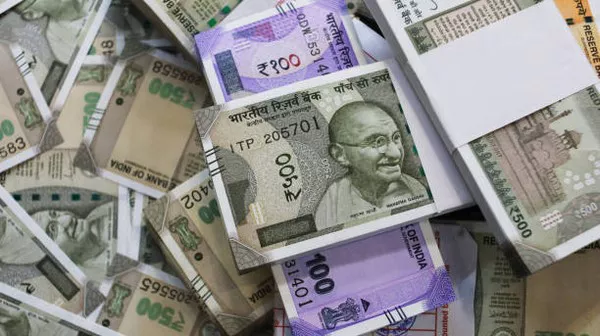India’s currency system has undergone numerous transformations throughout its history, reflecting changes in technology, economy, and governance. Among the significant shifts was the decision to discontinue the 1 rupee note, a move that sparked debates and discussions across the nation. In this comprehensive article, we delve into the timeline and implications of the ban on the 1 rupee note in India, shedding light on the factors that led to this decision and its impact on the country’s monetary landscape.
Understanding India’s Currency Evolution
Before delving into the ban on the 1 rupee note, it’s essential to understand the evolution of India’s currency system. The Indian rupee (INR), denoted by the symbol “₹,” has a rich history dating back to ancient times. Over the centuries, various rulers and empires issued coins and currency notes, reflecting India’s diverse cultural and political landscape.
In modern times, the Reserve Bank of India (RBI) became the sole authority responsible for issuing currency notes and regulating the country’s monetary policy. The Indian rupee underwent several changes, including demonetizations, currency reforms, and the introduction of new denominations, to address economic challenges and promote financial stability.
The Ban on the 1 Rupee Note: Timeline and Context
The decision to ban the 1 rupee note in India was part of a broader initiative aimed at rationalizing the country’s currency system and reducing the circulation of low-denomination notes. Let’s explore the timeline and context surrounding the ban:
Pre-Ban Era: The 1 rupee note has been a part of India’s currency system for decades, coexisting with coins of the same denomination. While coins were commonly used for transactions, particularly in rural areas, the 1 rupee note remained in circulation, albeit to a lesser extent.
Proposal for Ban: The idea of discontinuing the 1 rupee note gained momentum in the early 21st century as policymakers sought to streamline India’s currency infrastructure and address challenges such as counterfeiting, currency logistics, and cost-effectiveness.
Government Intervention: In 2016, the Government of India announced its decision to demonetize high-denomination currency notes as part of efforts to curb black money, corruption, and counterfeit currency. While the focus was primarily on denominations higher than 1 rupee, the move underscored the government’s commitment to transforming India’s cash-centric economy.
Implementation of Ban: The ban on the 1 rupee note was officially implemented on November 10, 2016, as part of the demonetization drive. While the immediate focus was on withdrawing high-denomination notes such as ₹500 and ₹1,000, the discontinuation of the 1 rupee note was seen as a complementary measure to modernize India’s currency system.
Rationale Behind the Ban
Several factors contributed to the decision to ban the 1 rupee note in India:
Cost-Effectiveness: Maintaining a currency supply involves significant costs, including printing, distribution, and security measures. Given the low value of the 1 rupee note and its limited utility in everyday transactions, discontinuing it was seen as a cost-effective measure to optimize currency logistics and resources.
Promotion of Digital Payments: The ban on the 1 rupee note was part of broader efforts to promote digital payments and reduce reliance on cash transactions. By discouraging the use of low-denomination notes, policymakers aimed to encourage the adoption of electronic payment methods, such as mobile wallets, digital banking, and debit/credit cards.
Combatting Counterfeiting: Low-denomination notes, including the 1 rupee note, are often targeted by counterfeiters due to their widespread circulation and perceived lower security features. By discontinuing the 1 rupee note, authorities sought to mitigate the risk of counterfeiting and enhance the security of India’s currency supply.
Enhancing Efficiency: Streamlining India’s currency system by phasing out the 1 rupee note was expected to improve operational efficiency for banks, businesses, and government agencies. With fewer denominations to manage and process, cash handling processes could become more streamlined and cost-effective.
Impact on Daily Transactions
The ban on the 1 rupee note had several implications for daily transactions and financial practices in India:
Transition to Coins: With the discontinuation of the 1 rupee note, coins became the primary form of currency for transactions involving the 1 rupee denomination. While coins had traditionally been used for small purchases and exact change, their usage increased following the ban on the 1 rupee note.
Adjustment by Vendors: Retailers, vendors, and small businesses adjusted their cash handling practices to accommodate the absence of the 1 rupee note. Some businesses rounded off prices to the nearest multiple of 5 or 10 to simplify transactions, while others continued to accept 1 rupee coins for small purchases.
Promotion of Digital Payments: The ban on the 1 rupee note was accompanied by efforts to promote digital payments and cashless transactions. Mobile wallets, online banking, and electronic payment platforms gained traction as alternatives to cash, particularly for larger transactions and bill payments.
Impact on Currency Circulation: The discontinuation of the 1 rupee note had a ripple effect on currency circulation patterns, leading to changes in the demand for other denominations. While higher-value notes remained the focus of currency reforms, the ban on the 1 rupee note contributed to a broader shift towards a more efficient and secure currency supply chain.
See Also: 3 Types of Rupee Coins in India
Conclusion
The ban on the 1 rupee note in India marked a significant milestone in the country’s currency evolution, reflecting efforts to modernize and streamline its monetary infrastructure. While the decision had implications for daily transactions, cash handling practices, and currency circulation, it was part of broader initiatives aimed at promoting financial inclusion, combatting counterfeiting, and enhancing operational efficiency.
As India continues its journey towards a digital economy and cashless society, the ban on the 1 rupee note serves as a reminder of the dynamic nature of currency systems and the need to adapt to evolving economic challenges and technological advancements. While the 1 rupee note may no longer be in circulation, its legacy lives on, shaping India’s monetary landscape and influencing future policy decisions in the realm of finance and economics.


